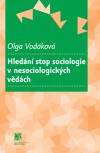Publications
Filter publications
Or use fulltext search
In the Czech Republic, women are severely under-represented in decision-making positions. Women make up only 26% of legislators, senior officials and managers, and only 3% of employed women are employed in management positions. These figures have not changed significantly over time. Gender equality infrastructure is almost wholly limited to the central level (Government and Ministries) in the Czech Republic.
In the Czech Republic, women are severely under-represented in decision-making positions. Women make up only 26% of legislators, senior officials and managers, and only 3% of employed women are employed in management positions. These figures have not changed significantly over time. Gender equality infrastructure is almost wholly limited to the central level (Government and Ministries) in the Czech Republic.
Monitoring report presents data describing the status of women in Czech research and development. Data covering years 2001 to 2011 show that the presumption that share of women among scientists will grow when there is a steady increase in the proportion of women among students of universities is wrong. The Czech Republic has 50% women among people qualified for the research profession, but there is only 25.1% women among researchers in 2011.
Kniha, jež vznikla v rámci projektu „Dějiny a současnost české sociologie“, zkoumá vliv sociologie na jiné vědní obory (případně vliv oboustranný), a to specificky v Českých zemích, resp. Československu a České republice. Zabývá se doposud nepříliš prozkoumanou problematikou vlivu sociologie (a to primárně sociologie české) na vybrané vědní obory v českém prostředí, její intervence a vstupování do nich: konkrétně do uměnovědných oborů, etologie a archeologie.
In this chapter the author has argued that there were four critical junctures that institutionalized a specific path of early childhood education and care (ECEC) in the Czech Republic. Its four critical junctures led to the institutionalization of a specific division of rules and concepts regarding “adequate” ECEC. The already established path of childcare and pre-school education policy places clear limits on the development of new policies.
The authors combine historical and sociological institutional analysis to show that despite the
political and socio-economic transformation in 1990s, the institutional development during and
before the communist era provides the best explanation for current childcare policies in Central
Europe. While most authors have concentrated on policy changes that have taken place in the region
The article focuses on Czech/German ethnic boundary from former interwar Czechoslovakia and its persistence (or transience) in electoral behaviour in selected post-1989 elections. In the analytical part of the article links between populations in regions and electoral results is discussed in order ‘extract’ phantom borders. The analysis draws on both recent GIS data on historical spatial units and historical electoral data to explore the concept of phantom borders.
Nejpočetnější cizineckou minoritou současné České republiky jsou Ukrajinci. Dle Českého statistického úřadu jich na území ČR pobývá 105 239 (ČSÚ k 31. 12. 2013). Tradičně se koncentrují do velkých měst a jsou zaměstnáváni v manuálních profesích. Od příjezdu prvních pracovníků se ovšem řada aspektů jejich migrace změnila. Například vedle původní cirkulační, resp. podvojné životní strategie, lze stále více zaznamenat zájem o usazení v ČR.
The scholarly debate on size-specific features of local democratic systems is inconclusive. Contradictory arguments concerning size effects have been formulated for three normative qualities of democracy – participation, accountability and representation and for system capacity. It has been argued that increasing municipal size has the potential to improve the democratic process, but also that municipal fragmentation is the basis for quality of democracy at the local level.
The article assesses well-being in the Czech Republic compared to other Visegrad countries (Slovakia, Hungary, Poland) and neighbouring Germany and Austria. By employing various approaches designed by several international organisations it takes an aggregate perspective to assess both the current well-being and its sustainability into the future. All the employed indicators that relate to current well-being evaluate the well-being in the Czech Republic as moderate among the OECD countries.
This study focuses on earnings inequality within dual-earner couples in four Central-East European (CEE) countries: the Czech Republic, Hungary, Poland, and Slovakia. It aims to analyse the factors that influence earnings distribution within couples. The analysis uses OLS regression applied on the Statistics on Income and Living Conditions 2011 survey to reveal the various influence of relevant factors, especially relative education and the presence of children, on relative earnings.







Facebook
Twitter